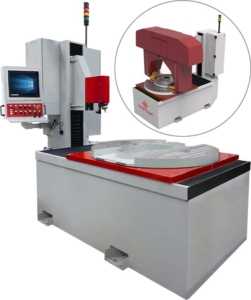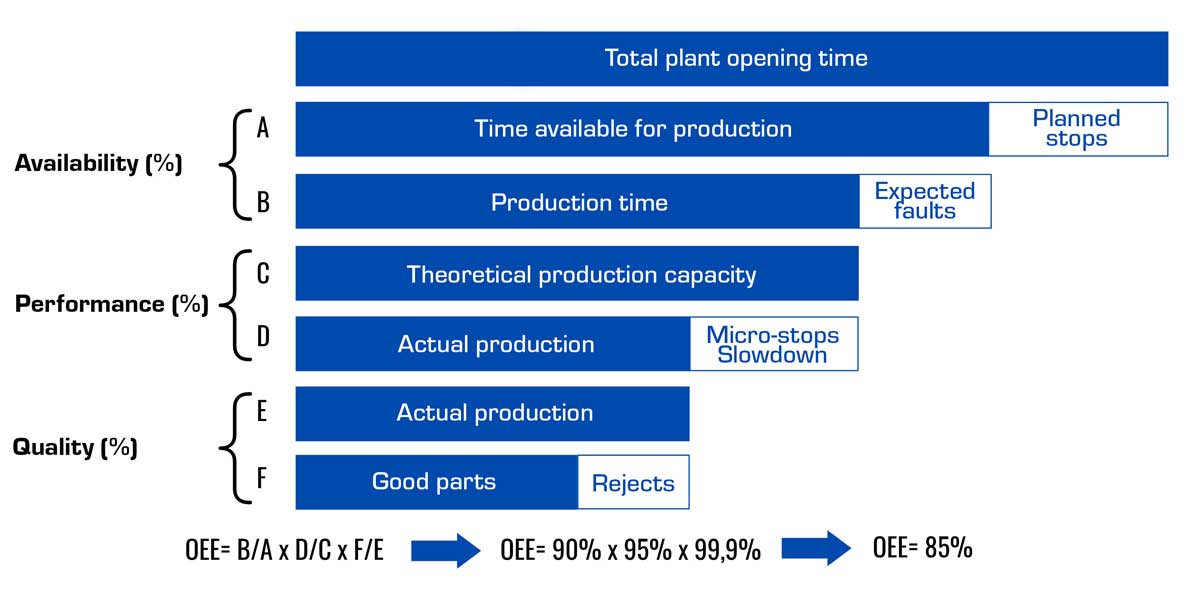AUTOMATED AND INDUSTRY 4.0 COMPLIANT
TESTING SYSTEMS
What are the benefits of Transition 4.0 and why is it so important to invest in automated and interconnected testing systems?
Automation and digitisation: these are the two main challenges that the industrial sector has had to face in the past decades, and today the Industry 4.0 paradigm is the benchmark for every sector.
Easydur took immediate action to keep ahead of the times and help bring the world of mechanical and materials testing into the era of the new industrial revolution.
In fact, whether you choose a hardness tester, a universal tensile testing machine, a torquemeter or any other testing system, thanks to the high technological level of Easydur, you can always count on:
- automated, interconnected and modular testing systems that maximise flexibility and performance, while reducing waste and enabling optimal reallocation of human resources: think of the use of cobots (collaborative robots, essential for robotic testing systems) or smart forklift trucks, but also the simpler barcode readers.
- integration for data exchange between all those involved in the production process, to facilitate reporting, performance analysis and statistical calculations.
Example of a serial hardness testing machine, on railway wheels, integrated with a gantry
All this and much more is part of the Business Intelligence idea, and an example of information that can be obtained thanks to Industry 4.0 enabling technology is the OEE indicator, which stands for “Overall Equipment Effectiveness“, a ratio that summarises availability, efficiency and departmental quality, made possible thanks to the OPC UA protocol, a must for the modern smart industry.
It goes without saying that with the monitoring provided by the Industry 4.0 paradigm, one gains the ability to react promptly, reducing waste, applying an incremental approach and identifying bottlenecks.
But the application possibilities are truly endless: depending on individual needs, the system implemented at the multimedia output of our quality control measuring instruments can change significantly, with the end result only being possible thanks to the technology that enables access to the world of the fourth industrial revolution, found in all Easydur products.
WHAT IS THE OPC UA STANDARD AND HOW IT IS USED TO ENSURE COMPLIANCE WITH INDUSTRY 4.0 REQUIREMENTS
Let’s start with a couple of definitions: OPC stands for “Open Platform Communications” while UA adds the term “Unified Architecture”, a concept that can be expressed as “unified architecture for open platform communications”.
In tangible terms, the OPC UA Protocol is used in the communication processes of industrial systems and is an important driver for Industry 4.0, as the fourth industrial revolution is entirely focused on cloud services, Internet of Things, human-machine connections and advanced reporting systems for monitoring production performance through MES or corporate ERP.
The standard is characterised by the greatest levels of user-friendliness on the market and extremely broad compatibility that allows the handling a wide range of data, and therefore the possibility to take full advantage of Easydur products, based on the Windows 10/11 operating system and using in-house developed software.
These are all features that make the implementation of the 4.0 paradigm within reach of all those companies looking for testing systems that are up-to-date with current technologies and able to provide important feedback regarding their production.
OEE: WHAT IT IS, HOW IT IS CALCULATED AND WHY IT HELPS TO IMPROVE PRODUCTION PROCESSES
First of all, let’s define OEE, an acronym that stands for Overall Equipment Effectiveness: we are talking about the standard for measuring company productivity and which, in simple terms, identifies the percentage of productive time that is actually productive. An OEE of 100 % indicates that only good parts are produced, as fast as possible, without downtime.
This is one of the most useful KPIs that can be calculated thanks to the Industry 4.0 revolution.
In fact, thanks to the data read from the machines and transmitted to the MES (Manufacturing Execution System) software, it is possible to calculate the parameters making up the OEE:
- AVAILABILITY
- How long the plants are used to produce
- How much time is lost due to breakdowns or organisational failures
- EFFICIENCY
- Actual versus theoretical production ratio
- QUALITY OF DEPARTMENT
- What is the successful versus unsuccessful process ratio
The result is a broad overview of the production process that allows to promptly identify a solution for the problems identified, which can include:
- High waste
- Bottlenecks
- Machine stops
- Poor performance
- Excessive energy consumption
- Low quality
But how is OEE calculated?
Depending on the software used, this indicator can be calculated in a more or less straightforward manner. In general terms, we can rely on this diagram to understand the mechanism behind the OEE calculations:
Discover all the Easydur products and choose the one that best suits your needs: whether it is a hardness tester, a torquemeter or a universal tensile testing machine, you can count on benefits such as OEE calculation and many more!






